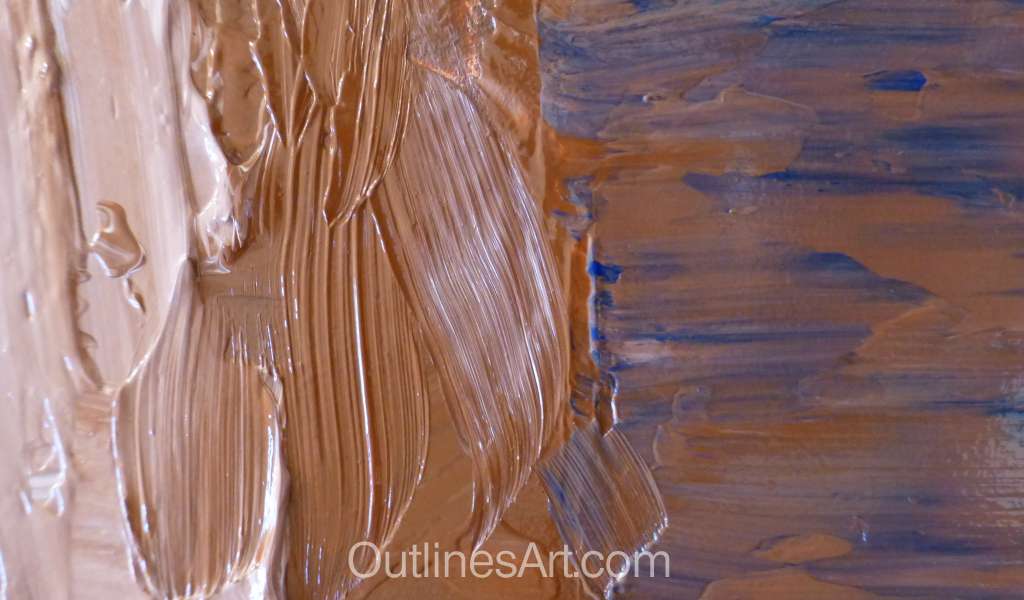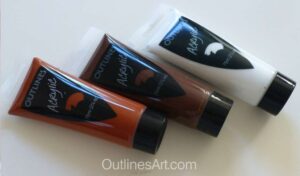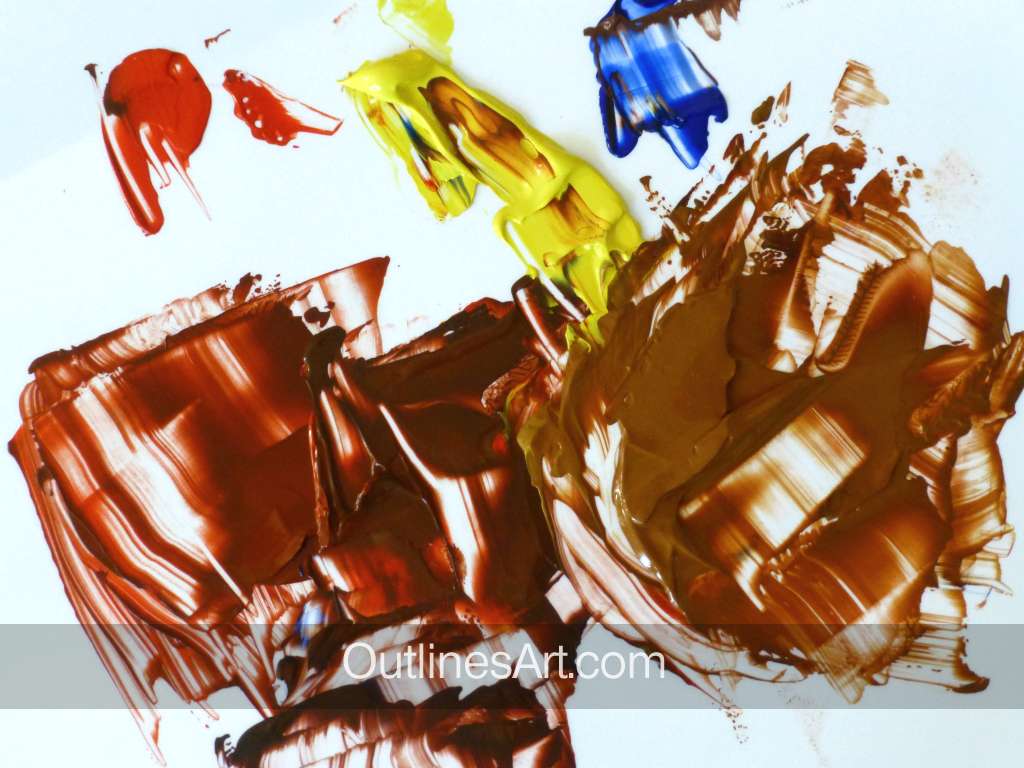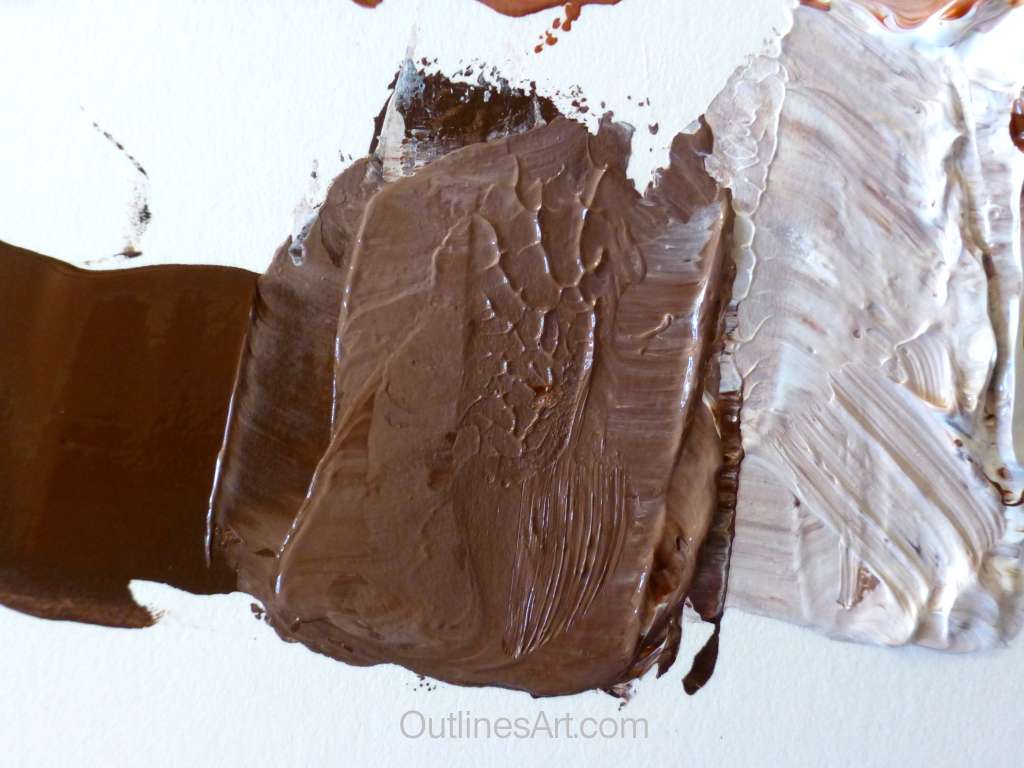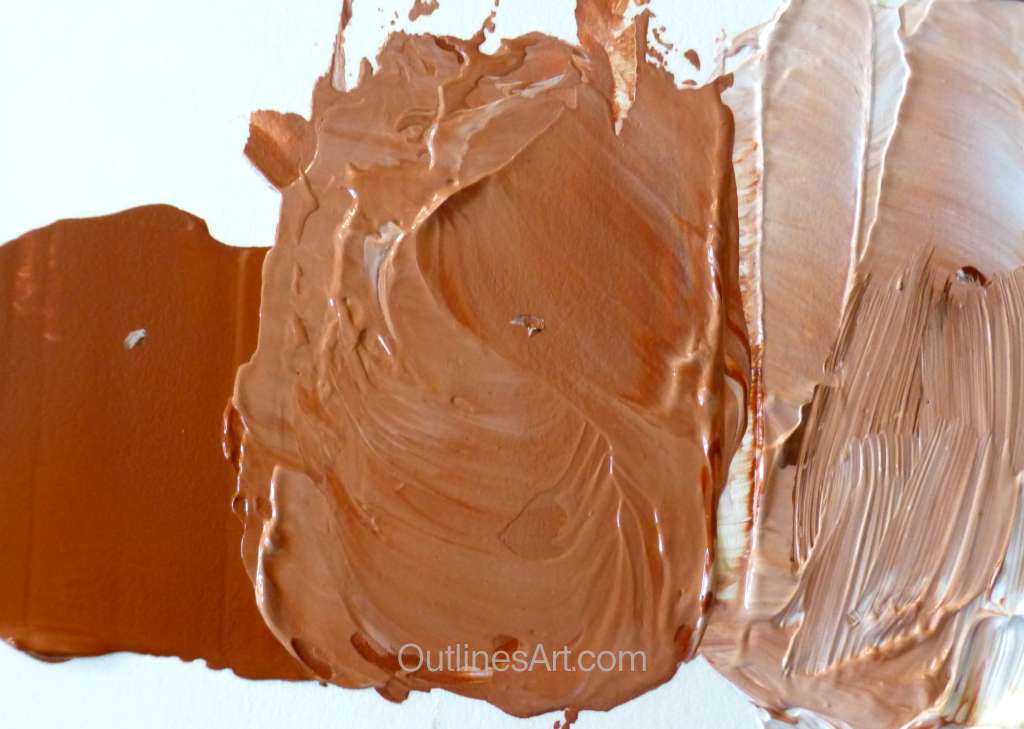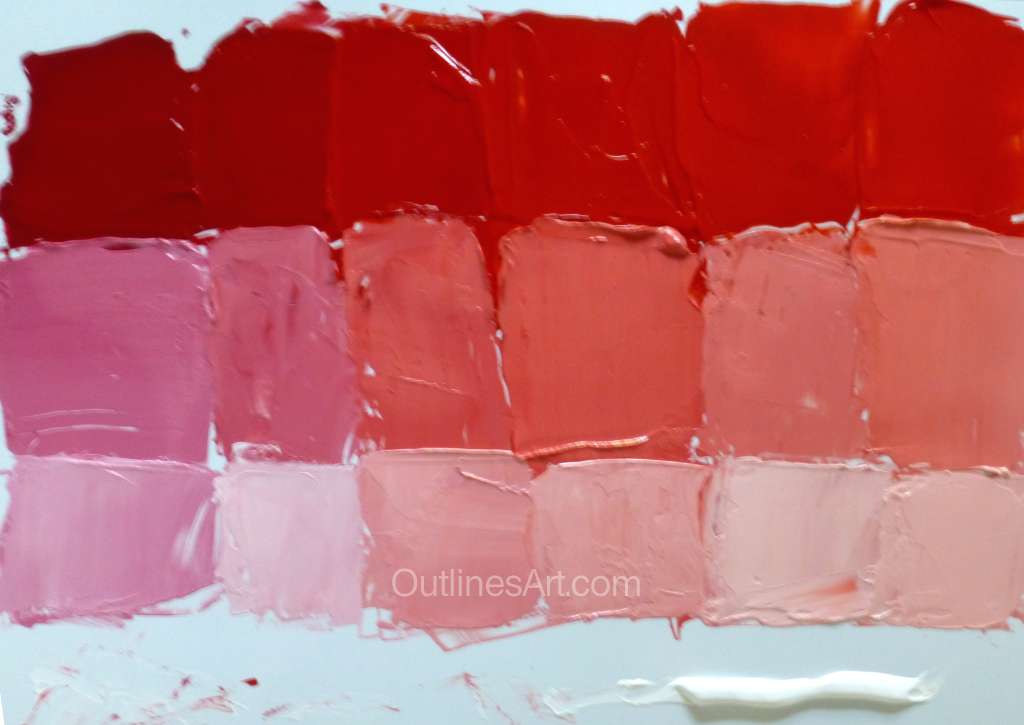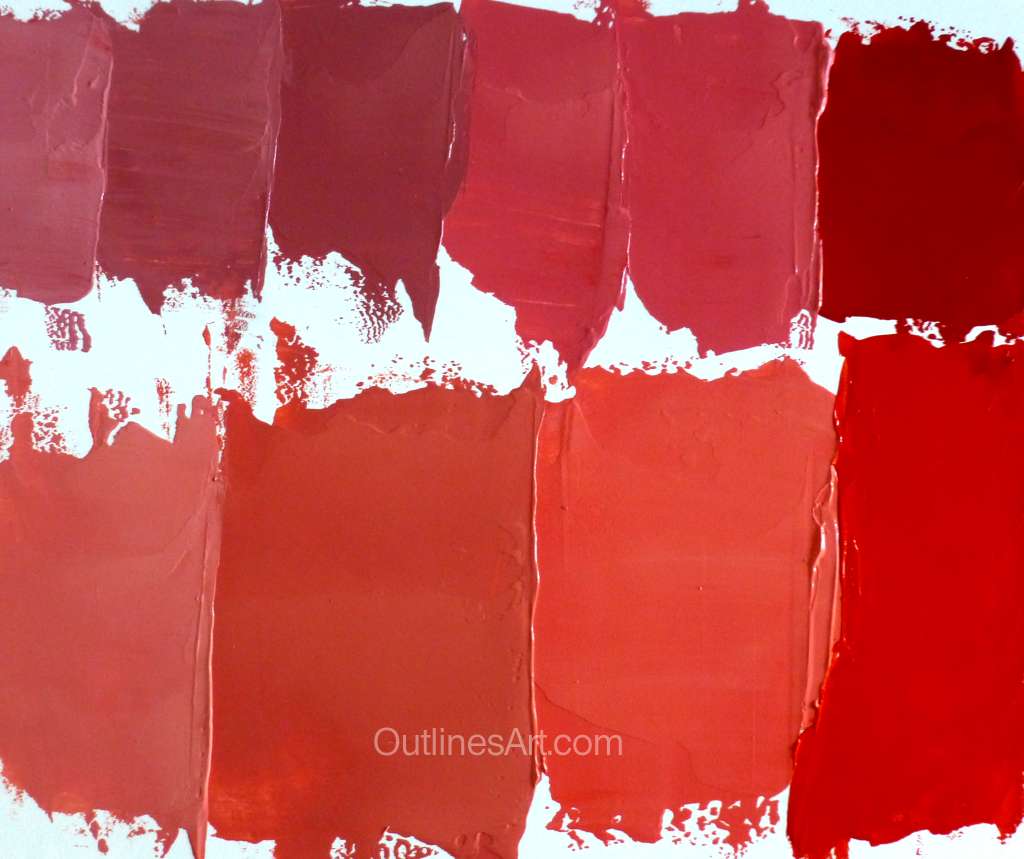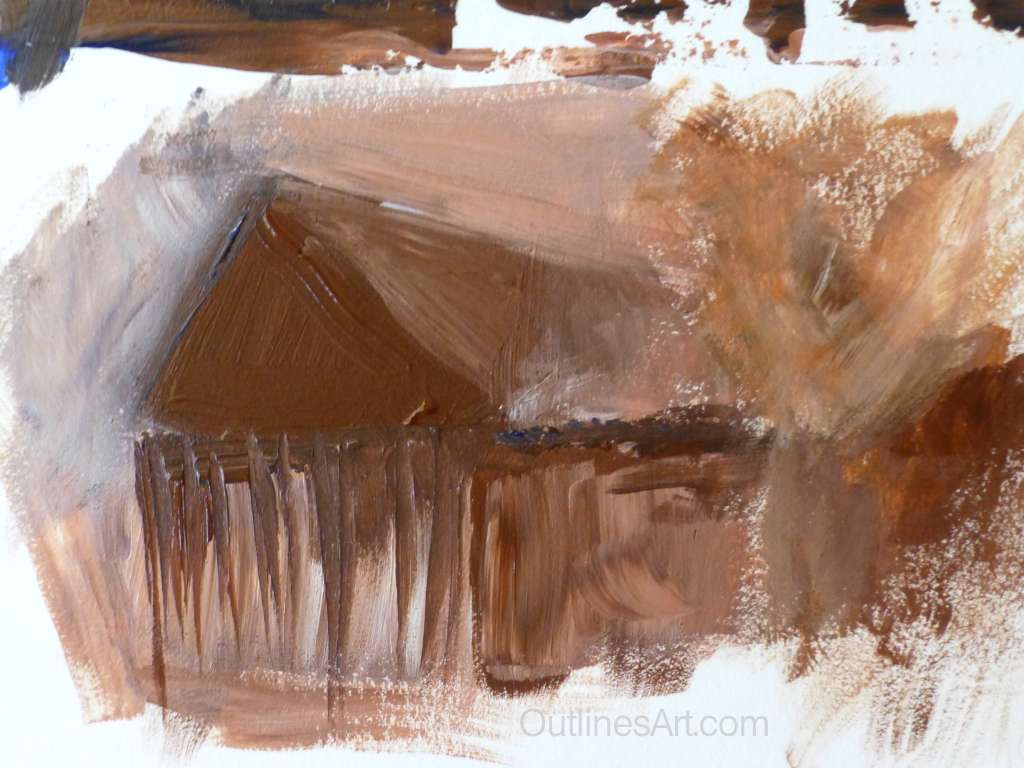Add Browns to your list of Basic colours
While a pallette of six pure colours is sufficient to mix all the colours you need, earthy browns speed up mixing subtle shades.
Pure vibrant colours are thrilling but sometimes you need to tone it down to make the colour less arresting, perhaps to make shadows and realistic textures.
Note: Links in this article open in a new window or tab.
Here’s a quick reminder: The essential six colours are one warm and one cool each of blue, red and yellow. For transparent mediums like ink or watercolour, the white of the paper provides the tones. For oils and acrylics white is needed.
Browns for mixing follow the same idea, one warm and one cool. I choose two earth colours that are useful in their own right, Burnt Sienna for the warm; it leans towards red, and Raw Umber for cool – which leans toward green.
To mix a brown you would use some of all three main colours, red, blue and yellow and by changing the proportions you change the type of brown. Earth colours made from real pigments dug from the ground are not mixed, but the colours for many paints are imitated by mixes of synthetic colours. To tone down colours you add its oppposite, which is a mix of the other two main colours. The proportion of each colour used will affect the final colour.
Ready-made browns are great when we want to subtly change another colour or tone it down quickly.
Lets suppose you want a 50’s look. The colours used in design of that period were often bright, but they had a softer toned down look. If I find a pic of a 50’s room or car, I’ll put it here. You can get that look by adding brown.
If we mix the browns with white, we’ll get a better idea of the kind of colour it is, so here is a quick look at these two.
If you are using watercolour, you would just add water and paint a wash that gets progressively paler on white paper.
REDS
The warm red (vermillion) mixed with a cool red (crimson) makes a mid red and different proportions of these reds give loads more shades between the two, all of them vibrant and all making clean pinks when mixed with white. (Here’s a Pic of three reds; top row is pure mixes and the other rows are with white added)
To tone this down you need to add the opposite colour, green, which is blue and yellow, and you can do that, but it could take some practice and a lot of mixing to arrive at the result you want.
Let’s see what happens when you add a little Raw Umber and then see the effect of adding Burnt Sienna.
We’ll add white to see how this affects lighter colours as well.
Try it yourself on the pallette by squeezing out a blob of both reds, one brown and some white. Try mixing different proportions in turn, then mixing a little white with each result.
Then do it again, but use the second brown this time. You’ll see how different these two mixes are from one another.
This image shows different mixes of brown with red.
Can you spot a typical 50’s pink in there?
The Raw Umber will make a greater ‘greying’ impact because you are adding more green, in effect, whereas Burnt Sienna is adding more yellow and makes more of a brick red.
BLUES
Here we go, warm blue (ultramarine) and cool blue (ceruleum) mixed in different propotions make all those lovely blues between.
We’ll make some mixes in the same way as we did before and look at the results. Go on, get some paints and try some mixes! You can use scraps of paper or card.
The opposite colour is orange, which is red and yellow. If you were doing this without a tube of brown you would need to mix various orange colours to make toned blues.
The Top image shows the blue streaked into the brown and this is a little sketch just playing with some mixed paint on my pallette. Do you see the pinkish areas and the greyer ones?
YELLOWS
Well you get the idea – it’s time to experiment with Lemon Yellow (cool) and Yellow Ochre (warm) So what’s the opposite of yellow? Purple! Do you see how it works? Refer to your simple colour wheel as a reminder. You haven’t made one, you say? Maybe now’s the time to do it. For now, see what the browns give you intsead.
Doing all of these mixes will show you what happens when you add the different browns.
Look at those soft sophisticated creams!
Aside: A simple colour wheel will make the opposite colours obvious and a complex one will be a constant reminder of how your colours can mix for more colours. It’s useful to know how the colours are made up, even if you are taking some short-cuts with ready made colours. It helps you select colours straight off when you want a particular result.
How to use colours together in a painting to appear to be another colour
In a painting, these effects can be achieved by adding small dots or strokes of other colours to your dominant colour to get the overall effect in an area, as is done by pointillist painters. Van Gough made paintings with tiny strokes of multiple colours, without mixing on the pallette. You can also use rough mixes that produce streaks by taking a little from each colour and painting directly with your two-tone brush.
In this excercise we can see different mixes of brown with red, blue and yellow. Think about how they can be used in a painting or how they change the feel or atmosphere of a painting. You can paint your own or find examples in landscape, still life and abstract.
Using Brown with White for Underpainting.
These browns are often used for underpainting when the basic tones are established, before moving on to the colours. Many master painters of the past always began a painting in this way.
Is Brown getting ‘Bad Press’ amongst novice painters?
You’ve all heard that tutors will tell you that trees aren’t brown and that you need to look again at things that appear brown.
Nothing wrong with that. If you do look again, you’ll see how the the highlights and shadows are anything BUT brown.
Cut-down ‘essential’ colour sets seldom include a brown. You might be forgiven for thinking (It’s almost as if) you are considered a total novice if you even own a tube of brown!
I admit, I’m guilty of excluding brown in ‘essential’ lists, but that type of list is for people
1. to help them Understand Colour and
2. to know that they can Carry Less.
Good News! Brown is marvellous, varied and interesting!
Not only that, a couple of browns in your paintbox can prove Very useful.
To steal a musician’s phrase – they help you ‘take it down a notch’.
It’s useful, entertaining and enlightening to explore all the ways to mix colours, but sometimes you are on the spot and you don’t have much time.
You need to know what Works!
Every painting session is a lesson but not every session is controlled and lasts all day.
Remember there are conventions and rules, but they have developed through artists’ experience.
Don’t allow yourself to be ruled by elite-ism or snobbish ideas.
Give yourself time to experiment at your own pace and use your own experience when you are ‘ On the Spot’.
Let me know how you get on in the comments below and while you’re about it, why not subscribe to my newsletter – I’ll send you a painting series over a few weeks and occasional news. tips and offers!

